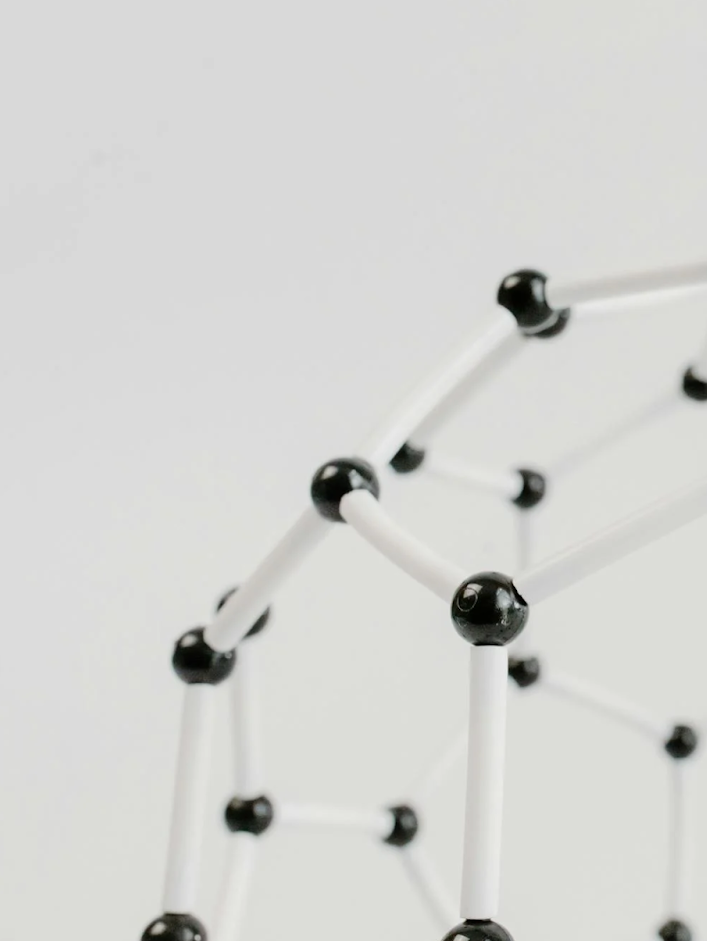What Is Lichen Sclerosus and Why Is It Often Misdiagnosed?

Lichen sclerosus inflammation can get worse. It mostly impacts the vaginal and anal regions. Being sick can be unpleasant. Smooth, white skin can fade, age, or scar. Symptoms include bleeding, pain, burning, and itching. Though women are more likely to have it after menopause, lichen sclerosus can affect both men and women. Preventing long-term harm requires early treatment and effective symptom management.
Present lichen sclerosus treatments are said to reduce symptoms and stop progression. Ignored or misdiagnosed, early lichen sclerosus can be harmful. Symptoms may be similar to those of eczema, yeast infections, or psoriasis. Ambiguity in diagnosis causes treatment to be postponed, hence extending suffering and aggravating the issue.
Why lichen sclerosus is misdiagnosed
Difficult to identify, lichen sclerosus is caused by complicated symptoms. Early signs are modest pain or light white patches, which many people view as harmless skin conditions. Early discovery is often hampered by embarrassment or reluctance to seek medical care for the most severely affected areas.
A lack of knowledge about this uncommon condition could lead doctors to misread symptoms. Lichen sclerosus is frequently misdiagnosed because it resembles other conditions. Candidiasis or leukoplakia can appear as white patches. Scarring and pain can misdiagnose chronic vulvovaginitis or balanitis in men. Strong suspicion and a skin biopsy could help identify. This underlines the need to see doctors or gynaecologists, who can more accurately identify signs of disease.
The significance of early and correct diagnosis
Treating lichen sclerosus requires an accurate and prompt diagnosis. Ignoring the problem could lead to scarring, loss of shape, and possibly squamous cell cancer in very unusual situations. Furthermore, ongoing symptoms could damage your mental health, self-esteem, and relationships, which could finally lower your quality of life. Patients with ongoing skin changes or discomfort, especially in sensitive areas, should not delay seeking medical help.
A physical examination and sample testing allow doctors to identify lichen sclerosus. A histological study of skin samples reveals that a thinner epidermis, a thicker dermis, and inflammatory infiltration characterise the syndrome. Treatment could start right after diagnosis. Usually, it reduces and stops symptoms.
Early management reduces present symptoms and stops permanent skin damage. Regular follow-up treatment ensures the problem remains under control and any flare-ups are promptly addressed.
Increasing awareness helps to lower misdiagnosis
To help reduce misdiagnosis, more information about lichen sclerosus should be shared among physicians and the general public. People may visit a doctor early and obtain an accurate diagnosis through educational initiatives, ongoing medical education, and more frank health conversations. If their problems continue after treatment, patients should feel empowered to seek a second opinion and fight for their health.
Conclusion
Lichen sclerosus, left untreated, can significantly impact your physical and emotional well-being. Knowing its symptoms and causes can help find it early and enhance therapy. Appropriate timing and the right drugs can help lichen sclerosus sufferers avoid significant side effects, maintain their quality of life, and feel better.
Image attributed to Pixabay.com
Why Do My Intimate Skin Issues Keep Coming Back With No Clear Answer?
“Why is this happening again?” If you’ve ever found yourself frustrated by persistent itching, discomfort, or white patches in your intimate areas—and felt like no doctor seems to have a clear explanation—you’re not alone. Many people, especially women, spend years being misdiagnosed with recurring yeast infections, eczema, or even psychological issues before learning they’re actually dealing with something else entirely.
That condition? It’s called lichen sclerosus. It’s rarely talked about, and even when it is, it’s often misunderstood. The symptoms mimic other more common conditions, which is why it’s so easy for it to slip through the cracks.
Getting the Right Diagnosis Can Change Everything
Understanding what’s really going on with your body can feel like a breakthrough. Once lichen sclerosus is correctly identified, you can finally begin treatment that addresses the actual problem—not just the symptoms. This doesn’t just help you physically. It brings peace of mind, restores confidence, and improves quality of life.
Treating the wrong thing over and over gets exhausting. You deserve better. And that starts with getting informed.
What Exactly Is Lichen Sclerosus?
Lichen sclerosus is a chronic inflammatory skin disorder that typically affects the genital and anal regions, though it can also appear on other parts of the body. It causes skin to become thin, white, and patchy. The most affected population? Postmenopausal women, although men and children can get it too.
It’s classified as an autoimmune condition, where the body mistakenly attacks its own skin. There’s no known cause, but there’s a strong link to immune dysfunction, hormonal imbalance, and genetic predisposition.
Symptoms That Are Easy to Miss—or Misread
The signs can vary, but most people experience:
- Persistent itching in the vulvar or anal area
- White, shiny patches of skin
- Pain during intercourse
- Tearing or cracking of the skin
- Bleeding or bruising
- Burning sensation while urinating (if the urethra is affected)
Because many of these overlap with conditions like yeast infections, contact dermatitis, or vulvodynia, doctors often misattribute them.
Why Is It So Frequently Misdiagnosed?
Similar Appearance to Common Conditions
Most general practitioners and even gynecologists might initially think it’s:
- Chronic yeast infection
- Lichen planus
- Eczema
- Psoriasis
- Contact dermatitis
Unfortunately, unless a skin biopsy is done—or a specialist recognizes the visual signs—it can go undiagnosed for years.
Lack of Awareness Among Clinicians
Although dermatologists and vulvar specialists are familiar with it, many front-line healthcare providers aren’t. In fact, research shows it takes an average of 5 to 15 years to get correctly diagnosed.
Embarrassment and Social Stigma
Let’s be honest: many people feel awkward discussing symptoms in intimate areas. That discomfort can delay diagnosis because patients may not fully describe what’s happening—or even seek help at all.
Is Lichen Sclerosus Contagious or Caused by Poor Hygiene?
Absolutely not. It’s neither contagious nor the result of poor hygiene. These myths add another layer of misunderstanding, leaving those with the condition feeling isolated or ashamed.
What Happens If It Goes Untreated?
Untreated lichen sclerosus can lead to severe scarring, fusion of genital structures, loss of pigmentation, and in rare cases, it increases the risk of vulvar cancer. That’s why it’s crucial to get the right diagnosis early.
Long-Term Complications Include:
- Labial fusion
- Narrowing of the vaginal opening
- Urethral stenosis (in men)
- Sexual dysfunction
- Increased risk of squamous cell carcinoma
How Is It Officially Diagnosed?
Diagnosis is often clinical, based on physical appearance. A punch biopsy may be used to confirm the diagnosis, especially if there’s uncertainty or to rule out malignancy.
What a Specialist Will Look For:
- Porcelain-white plaques on the vulva or anus
- Loss of normal anatomical landmarks
- Skin thinning or wrinkling
How Do You Treat It?
There’s no permanent cure, but the condition can be managed effectively with long-term treatment.
First-Line Treatment
- High-potency topical corticosteroids (like clobetasol propionate)
- Reduces inflammation
- Helps reverse skin changes
- Prevents scarring
Supportive Care
- Emollients and barrier creams
- Avoiding scented products and irritants
- Wearing breathable, cotton underwear
- Pain relief gels during flare-ups
Monitoring
Regular follow-ups are essential. This allows your healthcare provider to:
- Adjust treatment if needed
- Check for signs of cancerous changes
Can Diet or Lifestyle Changes Help?
While not a replacement for medication, some people notice symptom relief with certain lifestyle tweaks:
- Anti-inflammatory diets
- Stress reduction techniques like mindfulness or gentle yoga
- Pelvic floor therapy for those experiencing sexual pain
Table: Key Differences Between Lichen Sclerosus and Similar Conditions
| Condition | Affected Area | Symptoms | Diagnosis Method | Treatment |
|---|---|---|---|---|
| Lichen Sclerosus | Genital/anal skin | White patches, thinning, pain | Visual + biopsy | Topical steroids, monitoring |
| Yeast Infection | Genital area | Itching, discharge, redness | Swab test | Antifungal medications |
| Lichen Planus | Skin/mucosal areas | Purple bumps, pain | Biopsy | Steroids, immunosuppressants |
| Eczema | Anywhere on skin | Dry, itchy, red skin | Clinical evaluation | Moisturizers, steroids |
| Psoriasis | Scalp/elbows/knees | Red patches with silvery scale | Clinical + biopsy | Topicals, biologics |
Does It Affect Sex Life and Relationships?
Yes, it can. Pain, tearing, and fear of discomfort can cause avoidance of intimacy. Many people feel emotionally distant from their partners or even experience anxiety and depression. But understanding the condition and getting support helps rebuild that confidence.
Ways to Reclaim Comfort and Intimacy:
- Use vaginal dilators under professional guidance
- Open communication with your partner
- Lubricants and moisturizers safe for sensitive skin
- Pelvic floor physical therapy
What Should You Do If You Suspect You Have It?
Don’t wait. Make an appointment with a dermatologist or gynecologist who has experience with vulvar skin conditions. Bring photos if your symptoms come and go. Document your symptoms clearly.
Questions to Ask Your Doctor:
- Could this be lichen sclerosus?
- Should I get a biopsy?
- What long-term care do you recommend?
- How often should I have check-ups?
Emotional and Psychological Toll
Chronic health issues in intimate areas can affect more than just the body. They impact self-esteem, confidence, and mental well-being. Many people suffer in silence, thinking their symptoms are either in their head or untreatable.
Mental Health Support Options:
- Cognitive-behavioral therapy
- Support groups (in-person or online)
- Talking to friends or family
Real Life, Real Stories
A woman in her 40s shared how she was treated for yeast infections for seven years before a biopsy finally confirmed lichen sclerosus. With the right treatment, her symptoms drastically improved, and she now lives without daily pain.
A man in his 60s had trouble with tight foreskin and discomfort, which was initially dismissed as poor hygiene. Eventually, a urologist diagnosed him correctly, avoiding unnecessary circumcision.
These stories show the importance of proper diagnosis and that it can happen to anyone—regardless of age or gender.
What Are the Research and Statistics Saying?
- 1 in 70 women will develop lichen sclerosus at some point
- It’s more common in postmenopausal women, but not exclusive to them
- Up to 60% of cases go undiagnosed or are misdiagnosed initially
- 4-5% risk of developing vulvar cancer if untreated long-term
Conclusion
If something doesn’t feel right, trust your instincts. Don’t settle for half-answers. Lichen sclerosus may be overlooked, but it’s real, and it’s manageable once correctly diagnosed. The earlier it’s identified, the better the outcome. With the right care, you can live fully and comfortably. And remember, you’re not alone—even if it feels that way sometimes.
Always be your own advocate. Your body knows when something is wrong. Listen to it.

